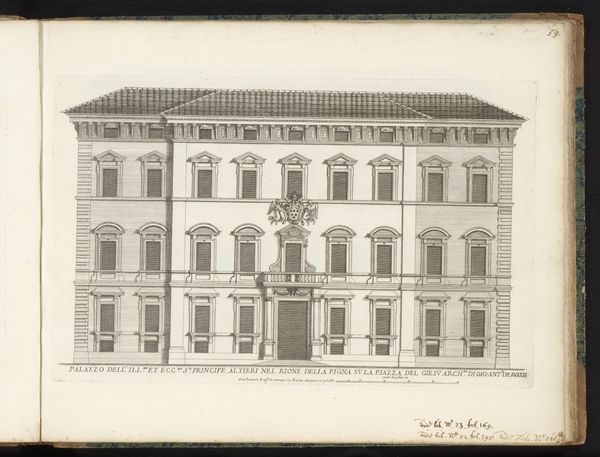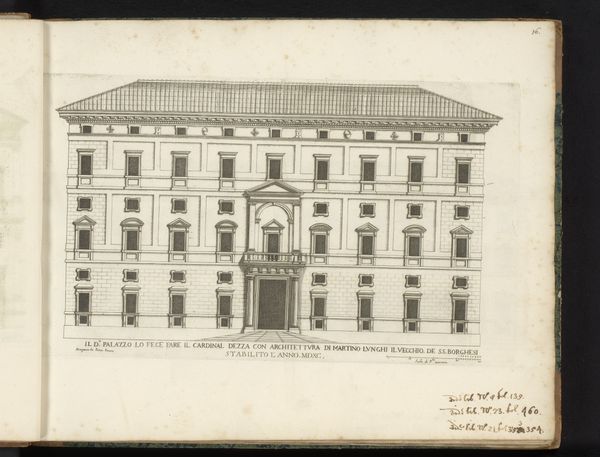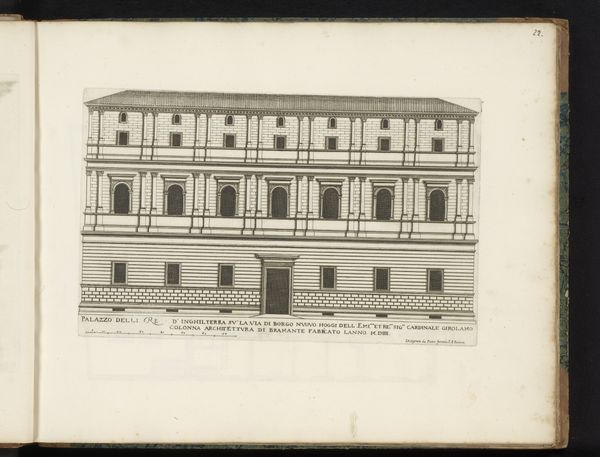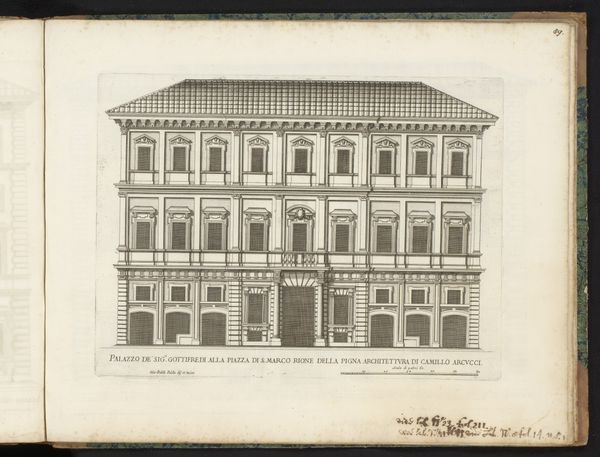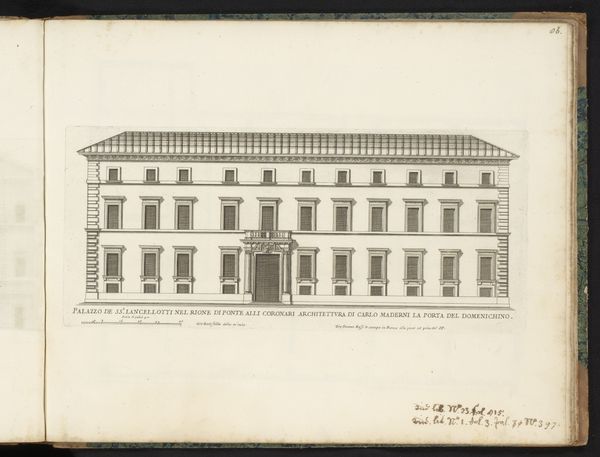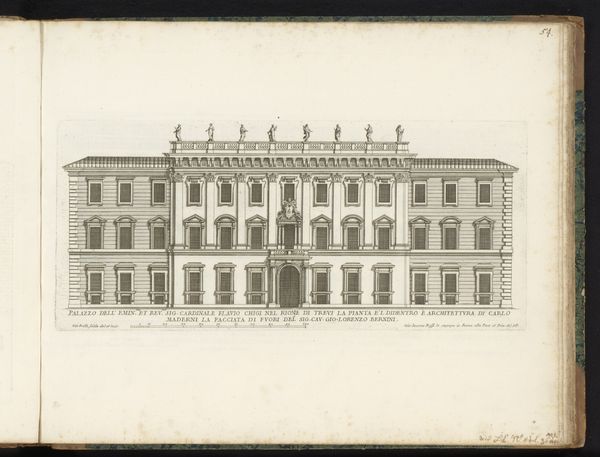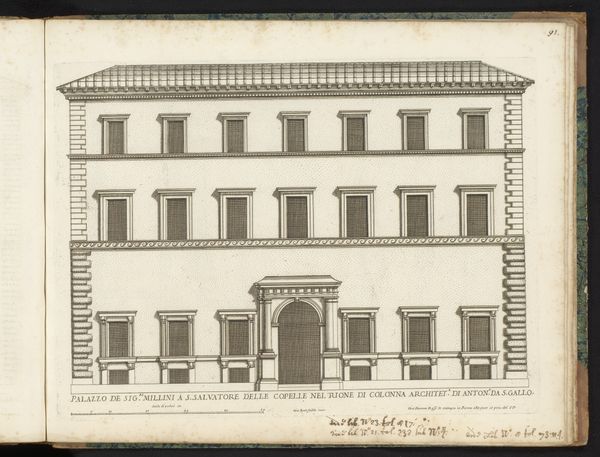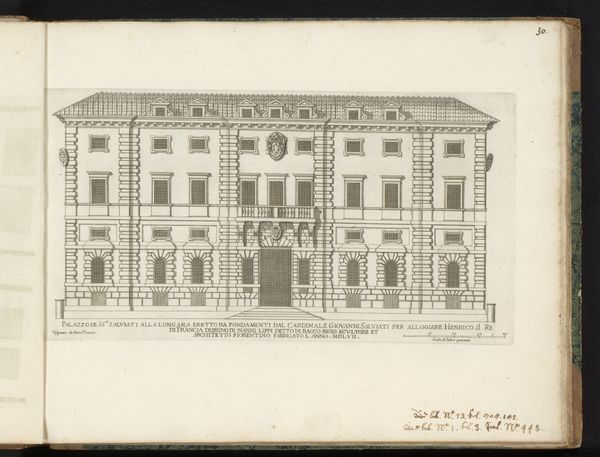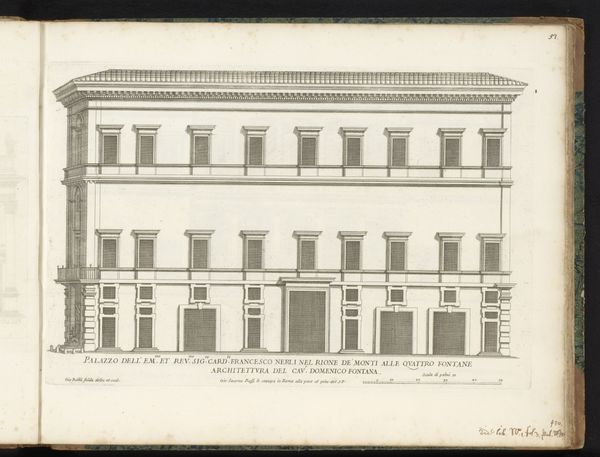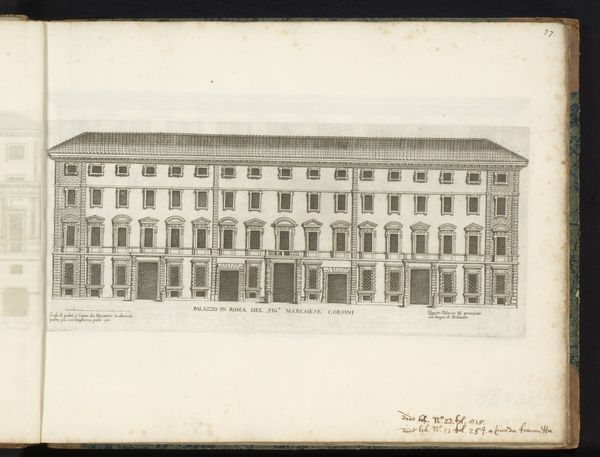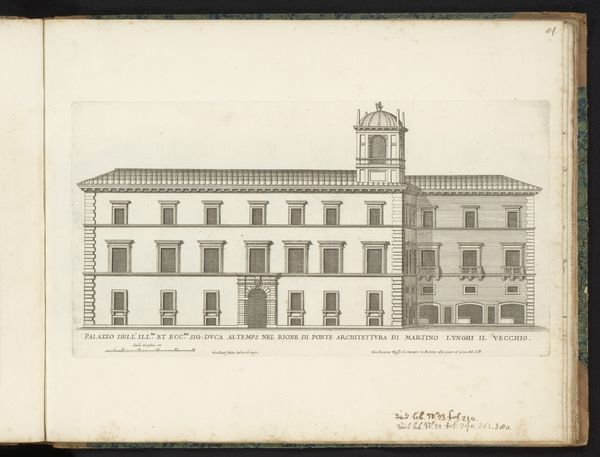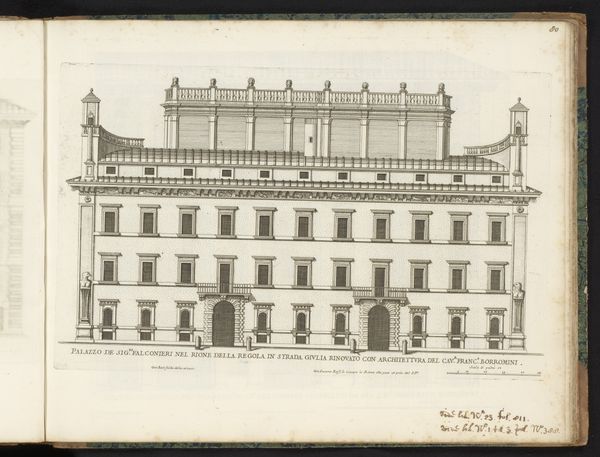
drawing, print, architecture
#
drawing
#
baroque
# print
#
line
#
cityscape
#
architecture
Dimensions: height 224 mm, width 387 mm
Copyright: Rijks Museum: Open Domain
Curator: This detailed print presents the facade of Villa Farnesina. It's a work attributed to Giovanni Battista Falda, dating from after 1655 and currently held at the Rijksmuseum. Editor: My initial thought is the sheer precision! The stark lines, the repetitive rectangular windows. It almost feels like an architectural blueprint rather than an artistic interpretation. I want to see the labor, the skill involved in creating these consistent marks. Curator: Precisely! Falda was known for his exacting representations of Roman architecture, and this piece certainly reflects that. We must remember the cultural significance of distributing images. Falda’s print facilitated the dissemination of Baroque architectural ideals beyond Rome. Consider the politics of the imagery and the power that bestowing honorific status through these idealized portrayals had. Editor: I see that—especially as it relates to power structures. One could really explore this piece through the lens of labor involved. Was Falda himself involved in the etching or were apprentices utilized in any manner? It is these modes of production that are interesting. What specific inks were utilized to create those firm black lines, how was it consumed at the time and even now by visitors like us? Curator: The baroque emphasis on grandeur is palpable. Notice how the repetitive structure emphasizes power and affluence? A structure built in service to an elite family. We also note the development of urban landscapes and architectural documentation at the time, making artwork like this increasingly important for the understanding of cultural memory. Editor: Absolutely! Looking at it from that perspective, I begin to see the beginnings of architectural industrialization. It's like Falda anticipated modern architectural design principles – clean, minimal, emphasizing functional shapes, reproducible to serve different elites! And thinking about the physical paper, and the multiple copies, distribution really becomes key to the narrative. Curator: That’s a fascinating way to consider the piece. Looking at Villa Farnesina through that lens, we can perceive not only the villa’s artistic and historical value, but we can also examine this print as an object enmeshed in complex socio-political exchanges and visual culture of the period. Editor: A simple cityscape etching leads to endless questions about labor and value creation... and consumption!
Comments
No comments
Be the first to comment and join the conversation on the ultimate creative platform.
